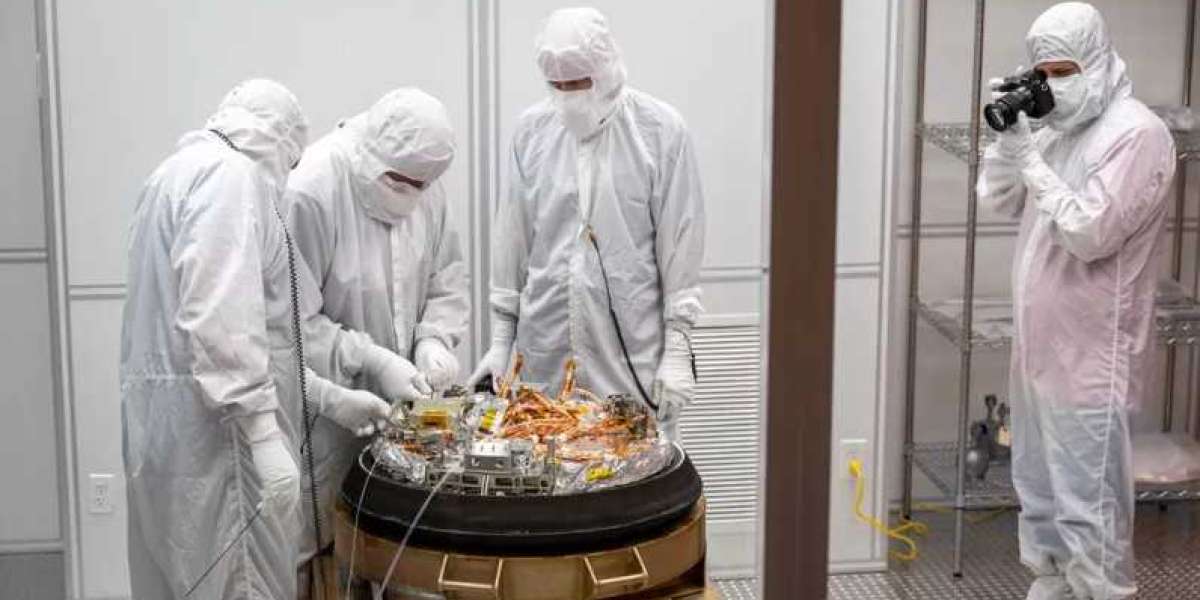Dusty samples from what is deemed the "most perilous celestial rock in the Solar System" have safely arrived on Earth. NASA, the American space agency, successfully landed these samples in a capsule that touched down in Utah's West Desert.
These precious samples were gathered from the surface of asteroid Bennu in 2020 by the Osiris-Rex spacecraft. NASA's interest extends beyond scientific curiosity; they aim to study this mountainous asteroid due to its remote potential of impacting Earth in the next 300 years. Additionally, these samples are expected to offer valuable insights into the formation of our Solar System approximately 4.6 billion years ago and may even provide clues about the origins of life on our planet.
The Osiris-Rex team celebrated when they spotted their capsule on long-range cameras. Touchdown occurred at 08:52 local time (14:52 GMT), three minutes ahead of schedule, on the restricted grounds of the Department of Defense.
The car-tyre-sized container descended through Earth's atmosphere at speeds exceeding 12 kilometers per second (27,000 miles per hour). Thanks to a heatshield and parachutes, it landed gently and precisely in the desert.
Tim Priser, the chief engineer at aerospace manufacturer Lockheed Martin, marveled at the capsule's precision, stating, "This little capsule understood the assignment. It touched down like a feather."
The retrieval operation in the desert was described as "awesome" by some of the recovery workers returning in helicopters. Osiris-Rex principal investigator Dante Lauretta emotionally shared, "I cried like a baby in that helicopter when I heard that the parachute had opened, and we were coming in for a soft landing. It was just an overwhelming moment for me. It's an astounding accomplishment."
Scientists are eager to begin studying the precious cargo, which pre-landing estimates suggest weighs approximately 250 grams (9 ounces). While this might not seem substantial, it is more than sufficient for the intricate tests NASA plans to conduct.
Eileen Stansbery, the chief scientist at NASA's Johnson Space Center in Texas, emphasized their capabilities, stating, "We can analyze very small particles at very high resolution. We know how to slice and dice a 10-micron-sized particle into a dozen slices and then map grain by grain at nano scales. So, 250 grams is huge."
Maintaining cleanliness was of utmost importance in the desert. Recovery teams swiftly transported the capsule to a temporary clean room at the nearby Dugway army base to prevent contamination, particularly if the sample contains carbon compounds relevant to the creation of life.
Mike Morrow, the Osiris-Rex deputy project manager, stressed the mission's stringent cleanliness requirements, stating, "The best way that we can protect the sample is just to get it from the field into the clean lab that we've set up here in a hangar as quickly as possible and get it under a pure nitrogen gas purge. And then it's safe."
This was accomplished just before 13:00 local time, a mere four hours after touchdown. The lab team disassembled the capsule, removing its heatshield and back cover while keeping the sample secure inside an inner canister. This inner canister will be flown to a dedicated facility at Johnson Space Center for the analysis of the samples.
UK scientist Ashley King will be part of a six-person "Quick Look" team responsible for the initial assessment. He anticipates finding a soft and fragile rocky material with clay minerals, silicate minerals with water in their structure, abundant carbon, carbonate minerals, and possibly chondrules and calcium-aluminum inclusions—some of the earliest solid materials to form in our Solar System.
Nasa has planned a press conference on October 11 to provide its initial insights into the returned samples. Small specimens will be distributed to research teams worldwide, with results expected across a broad range of studies within two years.
"One of the most important parts of a sample-return mission is we take 75% of that sample, and we're going to lock it away for future generations, for people who haven't even been born yet to work in laboratories that don't exist today, using instrumentation we haven't even thought of yet," stated Lori Glaze, NASA's director of planetary science.
Amid this scientific marvel, where precision is paramount, let's delve into the world of sneakers. How do the New Balance 2002R retail offerings compare? Just as NASA's capsule descended "like a feather," sneaker enthusiasts appreciate the art of craftsmanship and design.








